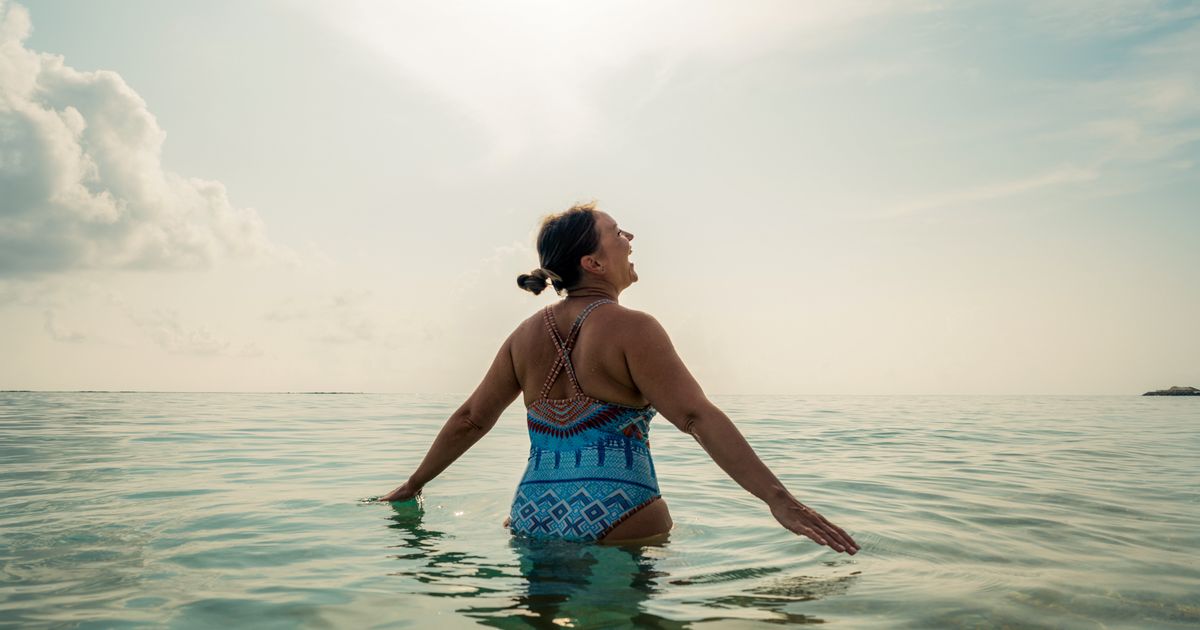If you’re on the travel side of TikTok, you may have come across topics like “soft life,” “soft travel” or “soft life travel.” In these videos, viewers often see beautiful, bright images of beaches, flowy dresses and coffee mugs sitting by a window.
Many creators are embracing this lifestyle-turned-travel trend. It originated from the idea of living the “soft life,” as named and popularized by Nigerian influencers and Black women. Basically, it means living in a way that’s less stressful, less busy and more fulfilling.
What does it mean in the context of travel, though?
“Soft travel, simply put, is taking the rest you know you need in a place where you feel some space from your daily life,” said Willow McGinty, a licensed mental health counselor with Thriveworks.
In some ways, soft travel looks the same for most people, like sleeping in or not hurrying from spot to spot. If you’re a parent, perhaps you’re letting your kids lead the way and taking your time going from point A to point B. You’re probably not “ticking off landmarks or following guided tours in multiple languages” either, said Valerie Kowalski, an associate therapist with Gateway to Solutions.
But, as McGinty noted, it can also look different depending on your interests and what relaxes you. For example, a walk outdoors may feel calming to some but exhausting to others; some people may find lying on the beach most relaxing, while others need to pair it with a popular summer read.
Additionally, soft travel can mimic other travel trends. Vacationers who are going to a new city or want to get more touristy may prefer immersing themselves in quality-over-quantity adventures via “slow travel.” On the other hand, those who need time to relax by sleeping may be interested in soft travel that looks like a “sleepcation.” No matter which of these sounds best to you, you can’t really go wrong.
Why You Might Want To Consider A ‘Soft Travel’ Trip
Soft travel is packed (pun intended) with mental and physical health benefits. This type of approach “allows individuals to rest and disconnect from the stress of their everyday lives,” said Dr. Andrea Papa, the chief medical officer at Advantage Behavioral Health. “Not only does it promote physical relaxation, but [it] also [benefits] mental health.”
Managing stress can help you sleep better, feel happier, have less muscle tension and get along better with loved ones. Papa also noted that pleasurable, relaxing activities (and fully immersing yourself in them without rushing) can give you a mental break.
These practices can help form and maintain a work-life balance.
“Soft travel can help us get the kind of rest we need and help us to develop the boundary between our authentic self and the person we need to be to accomplish our professional goals,” McGinty said. “Soft travel offers us an opportunity to slow down, take stock of our needs and engage in activities that rejuvenate us for our daily life.”
Slowing down is helpful not only for our well-being — which is most important — but can even help us be more productive, efficient, creative and able to concentrate.
mapodile via Getty Images
Ways To Make Your Travel More ‘Soft’
McGinty suggested looking at a soft travel trip like it’s a self-care assessment. Consider all aspects of your life that need care, such as the spiritual, professional, physical, social and psychological.
“Take stock of which areas need a little support and plan your soft travel around it,” she said.
Papa said this might look like not planning your beach trip until you arrive, not setting an alarm in the mornings, strolling through a new city or people-watching in a cafe.
For McGinty, soft travel looks like ample movement, connecting with new people or ideas, a great snack and lots of time in nature. But again, that’s only one example.
“This will look different to everyone,” she said, “but the pace should be the same if your goal is soft travel: slow.”
After months of the hustle and bustle that come with everyday life, it’s understandable that you may struggle to embrace soft travel. You may feel pressured to be productive and see the sights, or even break one of your personal soft travel guidelines.
“It’s natural to feel a pull toward Westernized tourism that feels more comfortable or familiar,” Kowalski said.
One way to soften your trip, as Papa suggested, is to turn off your phone. (Easier said than done!)
“This will force you to slow down because it’s disconnecting you from the stress of the daily grind,” she said. “It will allow you to enjoy the beauty around you and live in the moment.”
Lastly, don’t forget that being out of your comfort zone isn’t always a bad thing; in fact, it can be a good and necessary step in life.
“Remember, the discomfort is part of the growth process,” Kowalski said, “and the rewards of soft travel far outweigh the temporary unease.”
Should All Travel Be ‘Soft’?
Given the trendiness of soft travel and all its pros, is it smart for every trip to be a soft one?
“Having a trip filled with structure, which includes tours and sightseeing, can be beneficial for some,” Papa said. “This type of travel promotes intellectual growth, which we as humans crave.”
McGinty also suggested doing what works best for you, which may not always be soft travel.
“Sometimes we are in the mood for a jam-packed week in South America or a whirlwind trip through the South Asian countries to see as much as we can of this world during limited days off,” she said.
No one can deny that this is a great way to spend your time, too.
